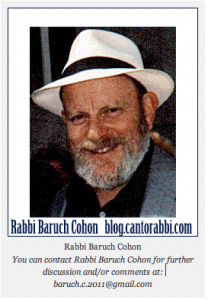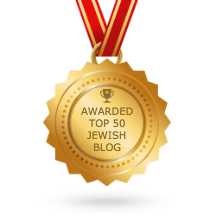DOT’S DA DIFFERENCE – Vayishlakh – Gen. 32:4 – 36, by Rabbi Baruch Cohon
Nowhere in the Torah do we find dental bridges mentioned. I mention them here because I happen to have one in my mouth, and this week’s reading reminds me of it every year. Why do I have a bridge between my teeth? It so happens that while eating dinner with guests in our Succah one year I bit down on a stainless steel fork and broke a tooth. Rather than make a scene, I just spit out half a tooth and finished my meal carefully. But other teeth later loosened around it, and my dentist fitted me with a bridge. No more problems. But what does this have to do with Torah?
Just this. This week’s reading includes the story of Jacob meeting his brother Esau for the first time in years, as Jacob returns from Haran. He now has a family, and flocks and herds and camels, hardly the same lone terrified Jacob who fled his brother’s anger. How will Esau react to him now? He sends messengers ahead, to Esau in Mount Seir in the place called Edom, with gifts, to announce his arrival. They report back, telling him that Esau is coming to meet him alright – with 400 armed men. So Jacob divides his followers into two camps, figuring that if Esau attacks one camp, the other camp can be saved. The night passes, with Jacob praying, and then struggling with a mysterious stranger – possibly an angel – but in the morning he manages to set out and meet Esau and his 400-man army. Jacob has his wives and children take turns approaching their dreaded uncle. Jacob himself goes ahead of them and bows seven times. And then, to our surprise, we read: “Esau ran to meet him, fell on his neck and kissed him, and they wept.” Is this the same man who wanted to kill him? What about the little army? And what about those dots over the word for “and kissed him?” Dots over words are rare in the Torah. What do they mean?
This is where the dental problem comes in. Commentators, from Rashi on, tell us that what Esau really intended to do was to bite Jacob’s neck. In fact, the 3-letter Hebrew root words for “bite” and “kiss” are quite similar. Nashak and nashach. Only one letter is different – kuf (the K-sound) in the word “kiss” and the guttural chaf in “bite.” To which one Midrash adds this explanation: Esau did bite Jacob’s neck, aiming for the jugular. But at that moment Jacob’s neck miraculously turned to iron. Esau broke all his teeth. No wonder he cried!
Maybe the Midrash has a message here for all of us, personally and nationally. The old stiff neck can protect us from false friends. All the bowing that Jacob and his wives and children did for Esau – no dots. It was sincere. Esau’s display of emotion remains questionable. The Torah’s dots pose that silent question. We might well dot various agreements made with questionable groups today, including some of Esau’s descendants.
We notice that Esau proceeds to accept Jacob’s gifts, and invites him to bring his family to Edom. Jacob declines, citing the difficulty of travel for his children. Really, how does he know when to expect Esau’s next attempted attack? Better leave some space between them. Through the centuries after that, Israel and Edom remained enemies. Rabbis in the Talmud even refer to Rome, the enemy in their day, by the code name Edom. Esau’s actions left the taste of danger in the mouths of Jacob’s family. As it left those dots in the Torah.
Nobody dots nuclear treaties these days. Seems like the least we could do.



